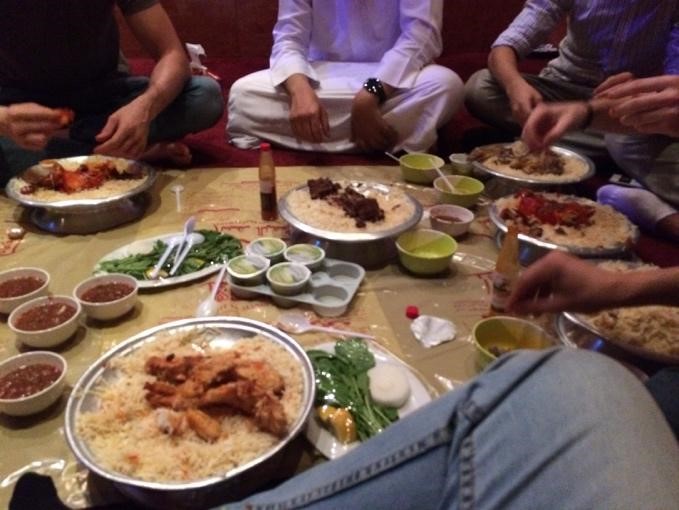Following Jordan these past seven weeks, we’ve watched him become well acquainted with the ways of Emirati culture as he’s settled in to his temporary home. We were even privy to his short-lived case of homesickness last week, the AUS Carnival, and his trip to Fujairah.
Well, just as every prior week, BE’s See the World, BE the Future scholarship recipient is on to new adventures! This time, organized by the exchange office for the students, it’s a trip to Global Village (claimed to be the world’s largest tourism, leisure, and entertainment project). Global Village is essentially a massive area off the freeway, pretty much in the middle of nowhere, between Dubai and Sharjah, featuring more than 30 different shopping pavilions representing different countries.

Two of Jordan’s exchange friends at the entrance of the Global Village.

Leaving Global Village, you can see the Burj Khalifa on one side and Big Ben on the other.
Jordan says, for example, the Indian pavilion, built in traditional Indian architecture, sold Indian Saris (standard dress for Indian women), delicious authentic Indian street food, and an array of souvenirs. Each Middle Eastern country had its own pavilion, and making his way through each one, Jordan understood how culturally different each country is from another. He had commonly grouped all Middle Eastern countries together as one culture cluster. With this experience, he was able to appreciate the differences that every country added to this rich region. He was able to see the cultural variations between Afghanistan and Iraq, or Kuwait and Qatar.

A view from outside the African Pavilion.
Jordan’s favorite was the African pavilion. With the many countries that make up Africa, it was a little off-putting for him to see it grouped as one, instead of like all the others, which were separated by countries with their own pavilion. He learned that this sort of discrimination was not only happening in western parts of the world, it was all over the world. However, the outside of the African pavilion was breathtaking. It featured a large Zulu mask, trees, and artwork that gave a mixture of traditional African cultures. The shops sold everything from food to African black soap, authentic clothes—where Jordan was thrilled to buy his very first Dashiki! Every thirty minutes crowds would gather to watch authentic African dances performed by professionals.

Shopping at the stores inside the African Pavilion.
On last Thursday of last week, Jordan and a few other exchange students witnessed, first hand, true Emirati hospitality. A young man, Khaled, they had befriended from Sharjah, took the four of them into the city to have an Arab dish popular in the region: Mandi (a plate of rice topped with meat).

Eating Mandi with their new Emirati friend, Khaled (dressed in the Kandura).
There was a sunken area they were seated in where a mat was placed on the floor. Dinner was served on the mat, instead of a dinner table. When Jordan noticed there was no silverware, Khaled told them that in Arab culture, they ate with their hands. The fellas quickly learned how to consume the delicious meal by balling up the rice in their hands, with the meat. Once they were stuffed with food, they all laid back and relaxed, as they were already on the floor.

After the Mandi, they all had to lay down and let it digest.
When the bill came, Khaled informed them that it would be disrespectful for him to allow them to pay, urging them to put their wallets away no matter how much they protested. Even later when they went out for tea, Khaled insisted upon treating them, which was something Jordan said they all came to respect. The whole day had been one of them accepting, and living out, how things were done in Arab culture. When in Rome…
Check back next week to see what new experiences Jordan will have to share with us!


Recent Comments